By Chloé Dupré.
Described by some as the 4th great innovation of this century, blockchain was initially introduced in the cultural industries in response to problems linked to intellectual property and copyright. Faced with the failed attempt to share all databases relating to the production and marketing of music across the world, how can blockchain bring greater harmony to this cacophony, through “smart contracts”?
“And now, the end is near, and so I face the final curtain, my friend, I’ll say it clear
I’ll state my case, of which I’m certain”: you may well have heard these few lines dozens of times, sung by more or less well-known singers. But behind all of these versions is a single author who has not benefited from the success of this song across the generations. Intellectual property and copyright have always been an issue in the world of music and the current system has demonstrated its weaknesses.
So what is a smart contract?
For many, 2015 was the key year for blockchain. It was also in this year that Berklee College of Music, one of the largest private music schools in the United States, took notice of this new technology and published a study in favour of greater transparency and equity in the music industry. This same year saw the launch of the blockchain, Ethereum, which updated the smart contract concept, established by Nick Szabo in the 1990s.
Smart contracts are implemented in three stages: firstly, you attempt to transpose a traditional contract into programing language; next, you register the computer program in a blockchain, and lastly you run the computer program (by an electronic payment, performance date or any other event triggered by an oracle).
This new type of contract uses a comprehensive package of metadata, precise and reliable, necessary for the payment of beneficiaries, in a more transparent and fair manner, while limiting the number of middlemen. They pre-establish the rules of execution by those involved. Each task is identified (whether artistic or technical), and registration is automatic and carried out in real time when a transaction is associated with it.
Artists are open to solutions
The creation of a work poses many difficulties when the number of people involved increases: the intellectual property is not necessarily well-protected and this is highlighted when there is any ambiguity surrounding its authorship. Things become even more complex when an original or transformative work is involved (as is the case in mash-up or remix).
Blockchain is used in six fields in the cultural industries: creative and productive collaboration, intellectual property protection, disintermediation in content distribution, management of rights, contractual arrangements and electronic payment.
Today, the artists interviewed can easily envisage using blockchain in their daily lives, in the sense that it would make life much easier. This technology would require just a small amount of their time to formalise their data, leaving them plenty of time to be creative, instead of having to network for example.
Artists, whatever their vocation, are entrepreneurs, innovators. Singer Imogen Heap (photo above), who started out in English pop, has been one of the pioneers in her field: in 2015, she released her song “Tiny Human” on the Ujo Music platform, based on the blockchain Ethereum. For each purchase of this song, paid in ethers, the rights are proportionally divided between the 8 people involved in its creation.
A massive change for the cultural industries
With the increase in collaborations between key players in the music industry, the future is not very far away. In 2017 alone, two notable partnerships of SACEM with IBM are laying the foundations of a new paradigm. Meanwhile, Spotify, which is now collaborating with MediaChain, “a blockchain data solution for connecting applications to media and information”, is closely following the movement.
This change of vision is not the privilege of large groups. Start-ups may not have the same R&D resources but they are no less adventurous, benefiting from an on-the-ground approach, proximity with the artists and organisational flexibility.
Some have already assimilated it, like Bittunes, which pays the leading consumers, bearing in mind that virality is just as important for an artist as landing a gold disc.
Professionals do not yet have the figures on how important and influential blockchain will be in the music sector. But it will soon be possible to imagine a link with big data and, in the medium term, collaboration with artificial intelligence. Moreover, since IBM is already one of the major architects of blockchain, with Hyperledger Fabric, it is easy to envisage that this dear Watson could release some erroneous data, in particular metadata.
Today, blockchain can be viewed as a Swiss army knife: not yet an optimal tool, but it does the job and meets several needs. Proficient and necessary in responding firstly to the problem of intellectual property, the SACEM will however have to demonstrate, through its partnership with IBM, that, when in great demand, blockchain remains optimal in terms of performance and scalability.
Beyond the cultural industries, any sector that requires third party confidence or contracting – such as banks, energy suppliers – can envisage using blockchain. It is not insignificant that the emergence of blockchain is directly linked to a crisis in confidence, namely in response to the sub-prime crisis.
By placing their confidence in a system based on the consensus within a network, should musicians invest some of their time in the technology to achieve greater freedom? Maybe Claude François could answer that one.
At the Digital Tech Conference, Jérôme Pons, engineer and entrepreneur with Music Won’t Stop, is offering a workshop in collaboration with Digital Catapult, which will attempt to “explore the opportunities offered by blockchain for the creative industries”.
Jérôme Pons is first and foremost a musician. He is actively involved in the international standardisation of blockchain and is leading the work group “Architecture and Modelling” within AFNOR. This hat-trick of roles has enabled him to develop a solid expertise in the structuring and management of data from the cultural sectors. “The collaboration becomes increasingly fine and disseminated”, states Jérôme Pons. “You can imagine that, in the future, you will be able to pay Facebook or Twitter accounts sharing music from a streaming platform, with a certain number of followers.”
Originally published in Usbek & Rica “La blockchain peut-elle mieux protéger les droits des artistes ?“

